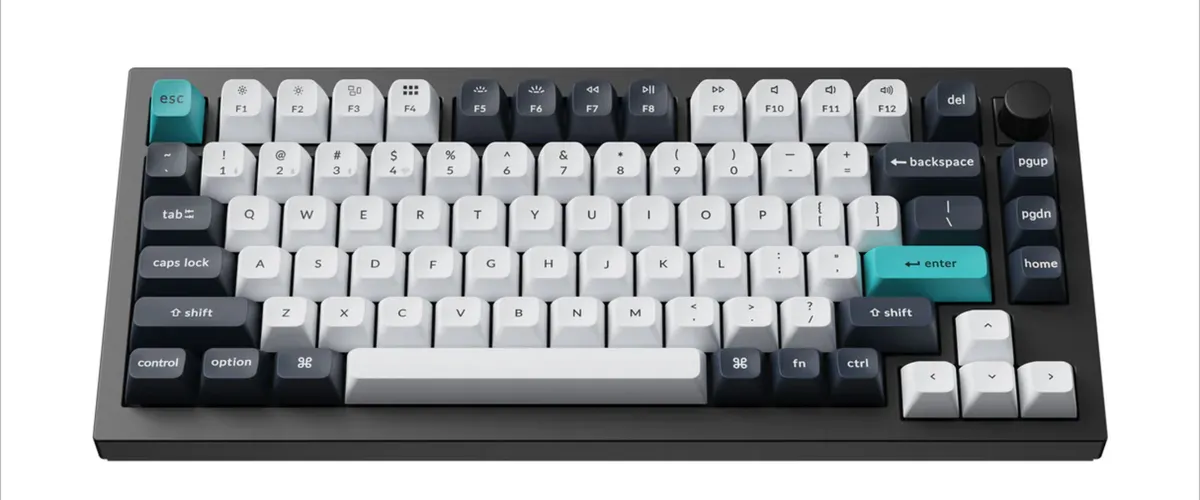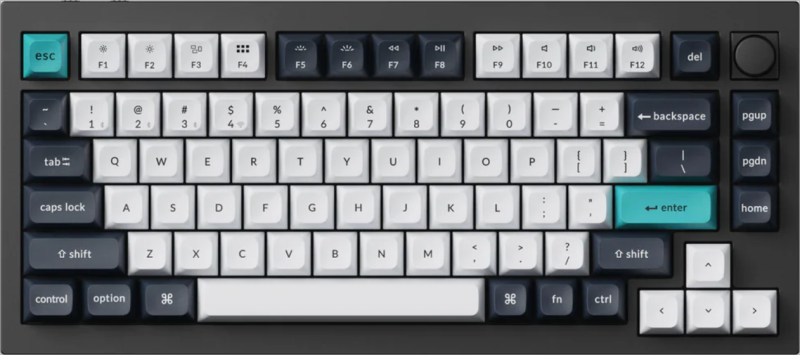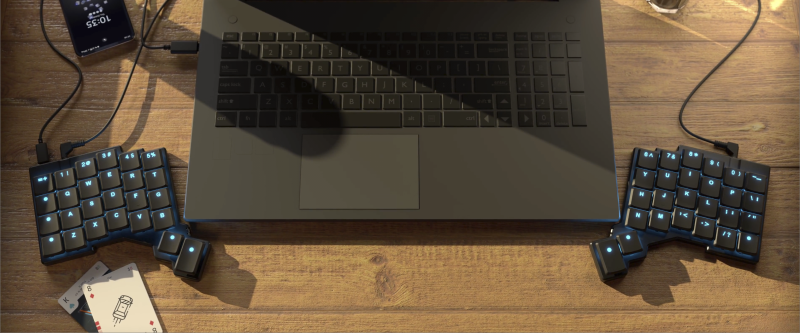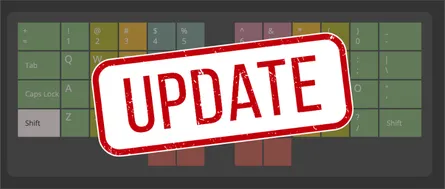
Mechanical Keyboards
- Eric Kraus
- productivity
- Aug 24, 2025
Mechanical Keyboards
If you’ve done any research on keyboards before, you likely already know, you will run into the world of mechanical keyboards .
When I started working with computers, all keyboards were mechanical — it was just the way!
Over the years, we’ve moved to a world where ultra smooth and quiet keyboards dominate. Despite this, many people still swear by the clicky clicky…so, it got me curious.
What is it about mechanical keyboards that so many people love?!
I’m a firm believer there’s no better way to figure these things out, than to try it myself first-hand.
Keychron Q1 Max
After A LOT of research, I landed on my first keyboard, the Keychron Q1 Max

Features: 75% Compact - Double-shot PBT keycaps - Gateron Jupiter Banana switches - Solid, heavy aluminum
I LOVE this keyboard! The keycaps hug your fingertips, while the switches are just the right amount of resistance to avoid fatigue/misfires. The switches have a bit of a “thocky” sound to them — which is much better than a true “clicky” switch.
I was initially worried about the 75% form factor - but I became quiet fond of the simplicity without the number pad.
Before getting into this venture, I had thought the MacBook Pro had one of the best keyboards, which I still do believe it does amongst laptops. But after typing on the Keychron Q1 for awhile, the two are not even close! I started bringing it around the house with me. I never wanted to type on another keyboard.
The Q1 Max is built like a tank: solid, metal…great at home, but not something that travels well in a backpack. So, I started doing some additional research for a similar keyboard option for traveling.
Keychron K2 Pro
This led me to the Keychron K2 Pro .
While not that much smaller than the Q1 Max, the difference comes in 1.5lbs lighter, which is definitely noticeable.

Features: 75% layout - Double-shot PBT keycaps - K Pro Red Switch - ligher w/added sound absorption
Overall, I really like this keyboard. The layout works well for travel, but could easily be a ‘daily driver’. It’s still not very ‘backpack-friendly’, but does work for longer trips in my carry on bag.
Split Keyboards
With the two keyboards above, my ‘mechanical’ keyboard research has currently paused. However, while researching other productivity hacks, and some elbow pain creeping in, it led me back into the realm of keyboards - this time: split keyboards .
One of the key benefits of split keyboards is ergonomics. These keyboards are usually better for wrists and arms and offer an infinite number of configuration options. Another surprising benefit tends to be their unique designs which offer high customization abilities.
ZSA Voyager
Several models of split keyboards kept making there way into reviews. In general, reviews seem to be all over the place…which I think is attributed to how personal these keyboards are. Still, a small number of them stood out with consistently positive remarks.
Soon, I found myself unboxing a ZSA Voyager .

Features: Split with tenting and magnetic mount - Custom Choc keycaps - Kailh Choc Brown - Travel friendly w/incl case
LOVE LOVE LOVE this keyboard!
Small Key Layout
I guess I hadn’t notice this during my research, but right out of the gate I was hit with a pretty interesting dilemma: the keyboard only has 52 keys.
For comparison
There are 77 keys on a US-based MacBook Pro (+ power button):
- 26 letters
- 10 numbers
- 11 punctuation and symbols
- 6 commands (esc, tab, caps lock, space, return, delete)
If you’re counting, that’s already 53. And, we still need to find a place for:
- 8 modifiers (⇧, ⌥, ⌘, ^, fn, etc.)
- 4 arrow
- 12 function
This issue disappears when you begin customizing the keyboard to fit your needs. But it is something to consider, whether or not you are willing to make the adjustments to realize the gains.
Layers
Layers are a super powerful feature allowing a single key to provide different results depending on which layer is active. In practice, layers are no different than what happens when holding down the Shift key: producing a capital letter or symbol. After releasing the key, the keyboard returns to its normal state.
I go into this a bit deeper on the keyboard shortcuts page.
Thumb Keys
Another cool feature of the ZSA Voyager is the dedicated thumb buttons. These can be configured to almost anything you want.
As you would imagine, most people put the Space key on one of these. But, maybe not so intuitively, is putting Return and even Backspace/Delete keys on your thumbs. Let me just say: after doing this, you will never want to go back!
Just think… wouldn’t it make the most sense to put the most frequently used keys on strong fingers and so they don’t have to move that much?
On a normal QWERTY keyboard, just look at how far your pinky has to stretch to Return or even Delete ! It’s actually quite awkward.
More info
Check out my keyboard shortcuts page to learn some other keyboard customizations anyone can make…new keyboard not required.
If you’re curious, here is a link to my latest Voyager Keyboard Config page.
